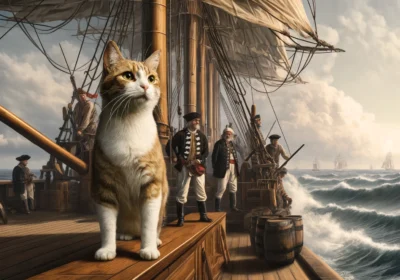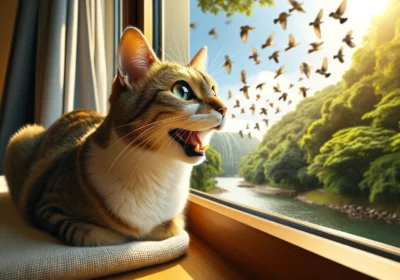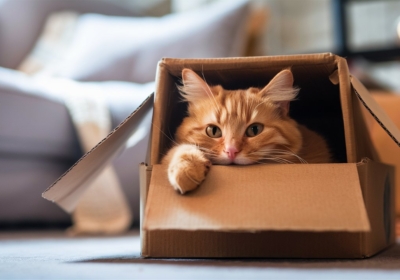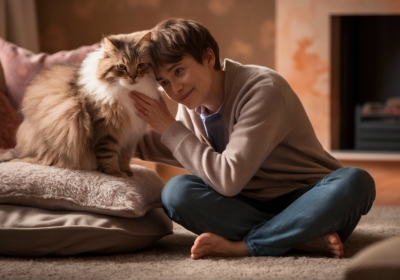Cats have long been revered and adored, their mysterious allure captivating humans for centuries. From the sun-drenched temples of ancient Egypt to the bustling streets of ancient Rome and the serene gardens of Japan, cats have woven themselves into the fabric of human history. In this article, we’ll embark on a journey through time, exploring how these enigmatic creatures were not just pets but symbols of divine power, luck, and protection. Discover the fascinating roles cats played in ancient Egypt’s religious ceremonies, Rome’s bustling households, and Japan’s folklore. Join us as we uncover the rich tapestry of feline history, spanning cultures and continents.
Table of Contents
Cats in Ancient Egypt
The Divine Connection
In ancient Egypt, cats were more than just companions; they were considered sacred beings. The goddess Bastet, often depicted with the head of a lioness or a domestic cat, embodied home, fertility, and protection. Cats were believed to carry her divine essence, making them indispensable in religious rituals. Families often kept cats to invoke Bastet’s blessings, believing that these animals could ward off evil spirits and bring prosperity.
Cats in Egyptian Art and Literature
The reverence for cats in ancient Egypt is vividly depicted in their art and literature. Tomb paintings often feature cats seated under their owners’ chairs, signifying their integral role in family life. Sculptures and figurines of cats, crafted from materials like bronze and gold, were common in households and temples. Cats even made their way into Egyptian literature, with numerous stories and hieroglyphs celebrating their grace and importance.
The Consequences of Harming Cats
The Egyptians’ reverence for cats extended to strict legal protections. Harming or killing a cat, even accidentally, was a grave offense punishable by death. Historical anecdotes highlight this reverence, such as the story of a Roman who killed an Egyptian cat and faced a mob’s wrath, demonstrating the severe consequences of such actions.
Cats in Ancient Rome
Domestic Companions
Cats arrived in Rome through trade with Egypt and quickly became cherished household pets. Romans valued cats for their hunting prowess, particularly their ability to control rodent populations. As domesticated companions, cats were beloved members of Roman families, providing both utility and affection.
Symbolism and Superstition
In Roman society, cats carried various symbolic meanings and were surrounded by superstitions. While generally seen as protectors of the home, some beliefs associated cats with bad omens. Despite these mixed views, cats were mostly considered positive symbols, representing freedom and independence.
Cats in Roman Art and Literature
Roman art and literature also reflect the presence of cats. Cats appear in mosaics and frescoes, often depicted in domestic settings. Writings from Roman authors, including Pliny the Elder, discuss cats’ behaviors and their role in daily life, highlighting their importance in Roman culture.
Cats in Ancient Japan
The Arrival of Cats in Japan
Cats made their way to Japan via Chinese and Korean traders and Buddhist monks. Initially, cats were prized for protecting valuable Buddhist scriptures from rodents. Over time, they became cherished pets within Japanese households and temples, valued for their companionship and mystical qualities.
Cats in Japanese Folklore and Religion
In Japanese folklore, cats are often portrayed as magical and protective beings. The Maneki-neko, or beckoning cat, is a well-known symbol of good luck and fortune, originating from Edo-period legends. Cats appear in numerous myths, sometimes as shape-shifting spirits or guardians, reflecting their deep cultural significance.
Artistic and Cultural Depictions
Cats are a popular subject in traditional Japanese art, especially in ukiyo-e prints, which often depict them in playful or serene settings. Japanese literature, such as the classic “I Am a Cat” by Natsume Sōseki, further illustrates the cultural fascination with these animals, celebrating their unique personalities and roles in human life.
The Enduring Legacy of Ancient Felines
Cats’ Lasting Influence on Modern Culture
The reverence for cats in ancient Egypt, Rome, and Japan has left a lasting legacy, influencing how we view and treat cats today. Modern Egypt continues to celebrate cats in art and culture, while in Italy, cats are cherished pets and tourist attractions, especially in Rome’s historical sites. In Japan, the Maneki-neko remains a popular symbol of good fortune, and cats are celebrated in festivals and media.
Lessons from History
The historical relationships between humans and cats offer valuable lessons. The universal appeal and significance of cats underscore our enduring bond with these animals. Ancient practices and beliefs remind us of the importance of respecting and valuing the creatures that share our lives.
Conclusion
From the temples of Egypt to the homes of Rome and the legends of Japan, cats have played pivotal roles in shaping cultures and societies. Their divine connections, practical contributions, and symbolic meanings highlight a timeless bond between humans and felines. As we reflect on their rich history, we continue to celebrate the unique place cats hold in our hearts and homes across the world.





